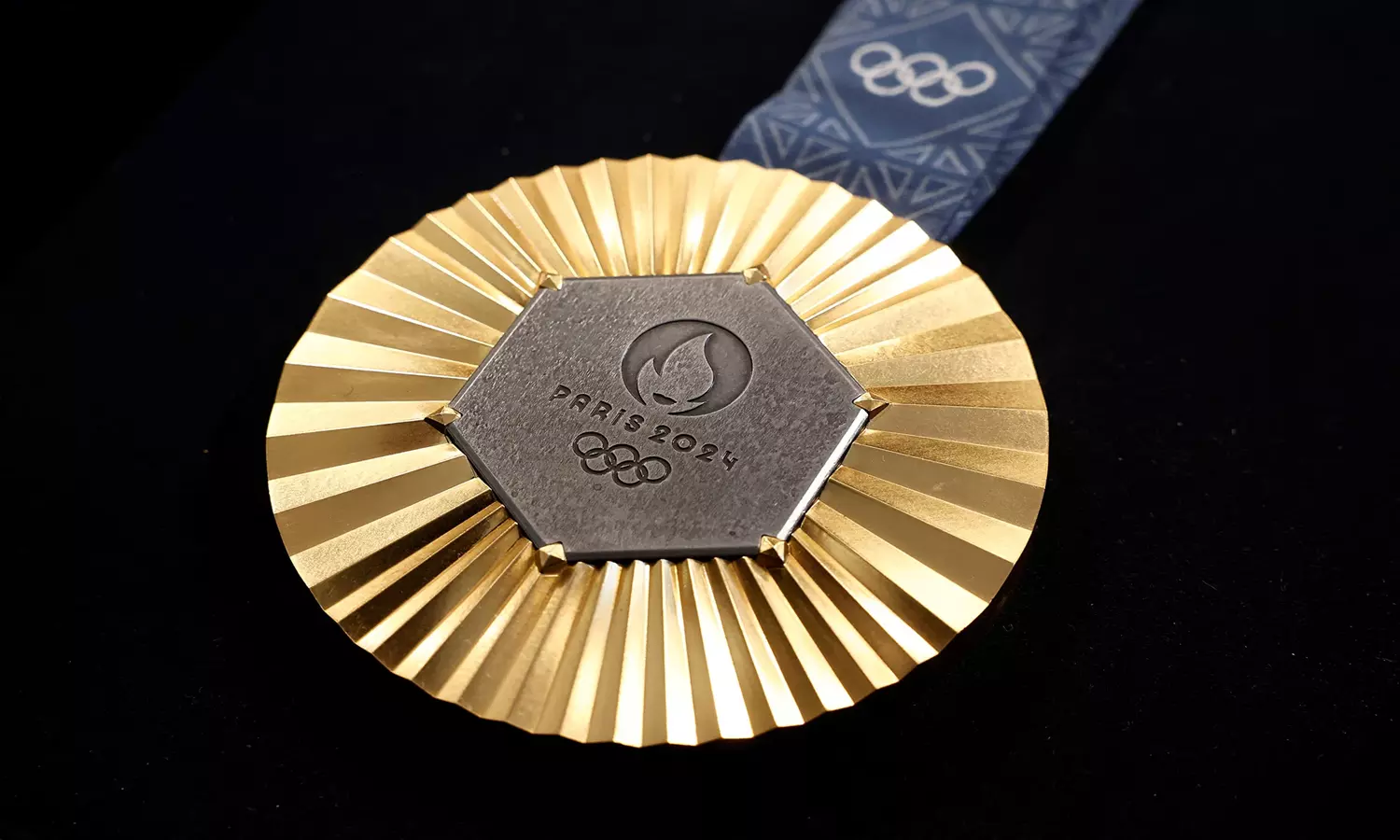Olympics
Explained: Are Olympic Gold medals really made of pure gold?
Olympic medals have an intriguing history and composition. Discover how tradition and practicality shape their design!

Olympic gold medals are composed of 92.5% silver and coated with at least 6 grams of gold. (Photo Credit: Reuters)
When athletes stand atop the podium to receive the gold medal at the Olympic Games, many people might assume these medals are crafted from pure gold.
However, the reality is quite different. While they are indeed made of gold, that is not the only metal that a medal is made of. A gold medal weighs 529 grams, and it contains only about six grams of gold, contrary to the assumption that they are made purely of gold.
The International Olympic Committee (IOC) stipulates that gold medals must be composed of 92.5 per cent silver and coated with at least six grams of gold.
In addition to silver, the medals contain six per cent copper, meaning the gold content is approximately 1.45% of the total composition.
The silver medal, as expected, is made entirely of silver. The bronze medal, on the other hand, is an alloy primarily composed of copper and tin, with a small amount of zinc added to achieve its distinctive bronze hue.
This begs the question: Why not use pure gold? What difference does it make if gold medals primarily contain silver, especially when silver medals are also awarded?
Pure gold is known for its softness, making it prone to dents and scratches.
There is also an old tradition of athletes biting their Olympic medals, which is connected to the softness of gold. This practice originated from gold collectors who tested the metal's softness by biting it.
The hardness of a material can be accurately measured using the Mohs Hardness Scale.
For example, tooth enamel scores 5 on this scale, while pure gold scores only 2.5, highlighting its softness.
Using pure gold for the Olympics is also a costly affair. The host cities would need to purchase gold to make the gold medals, which could be a significant expense for the budget.
To put this into perspective, if Olympic gold medals were made entirely of gold, the cost for the medals alone would be around 40 to 50 million dollars.
History of Gold Medal in the Olympics
When the modern Olympics were revived in 1896, the winners of the first Athens Games received silver medals, not because they were inexpensive, but because silver was considered more valuable than gold then.
First place was awarded silver, while second place received copper. It wasn't until the 1904 St. Louis Olympics in the USA, that the first gold medals were introduced, although the 1900 Paris Olympics had featured uniquely rectangular medals.
The standard practice of awarding gold for first place, silver for second, and bronze for third didn't become established until the 1908 London Olympics.
Interestingly, the last truly solid gold medals were given out at the 1912 Stockholm Games.
The Paris gold
At the Paris Olympics 2024, the gold medal, weighing the IOC stipulated 529 grams, will feature a piece of iron from the frame of the Eiffel Tower, centrally placed and incorporated into the Paris 2024 logo. These medals will carry historical value, making them coveted possessions for the athletes.

